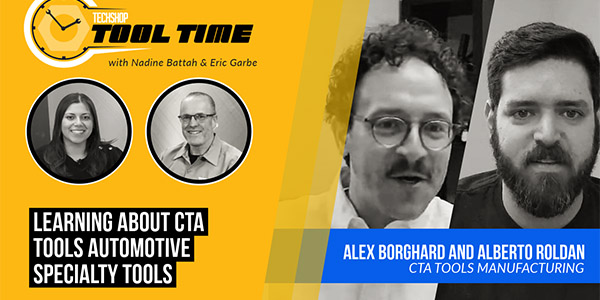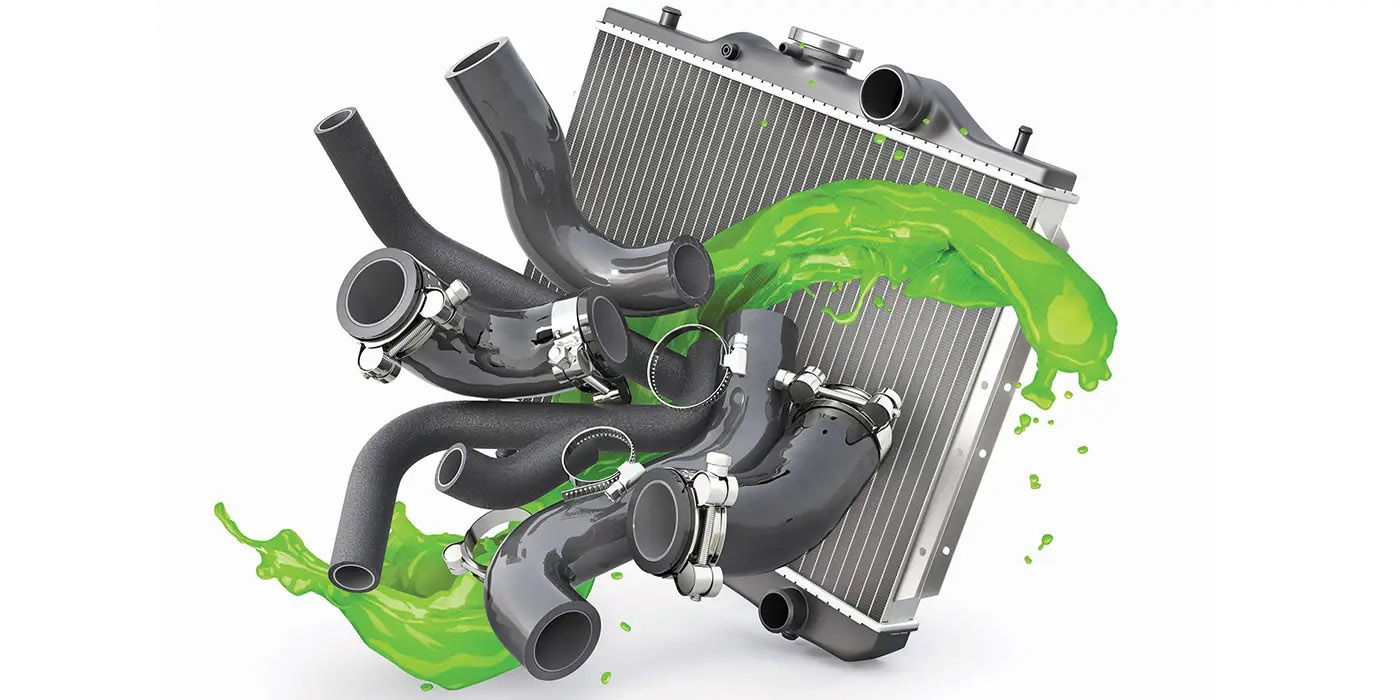Can you believe antilock brake systems (ABS) have been around for roughly a quarter-century? The very first electrohydraulic ABS systems made their debut in Europe back in 1978 on a couple of Mercedes and BMW models. ABS didn’t arrive in the U.S. until 1985 when Mercedes, BMW and Audi began offering it as an option on some of their high-end luxury models.
Ten years later, ABS was available as an option or standard equipment on most passenger cars and light trucks. Like air bags, ABS quickly became a “must-have” feature because of the safety benefits it supposedly provided. Nobody would argue the fact that ABS helps prevents skids when braking hard on slick or wet surfaces. Most consumers are sold on ABS and want it on the vehicles they buy.
EVOLVING TECHNOLOGY
Antilock brake systems are made by a number of OEM suppliers including Bosch, Delphi, Kelsey-Hayes and Continental Teves. Bendix was another OEM supplier, but was bought by Bosch a number of years ago.
ABS has steadily evolved and improved over the years, getting smaller, lighter, faster and smarter. Many of today’s ABS systems also incorporate traction control to prevent wheel spin when accelerating on slick surfaces, and stability control to improve handling and driving safety under all driving conditions.
The basic idea behind ABS is to maximize braking traction and steering control by minimizing wheel slip when braking. A tire that is just on the verge of slipping produces more friction with respect to the road surface than one which is locked and skidding. Once a tire loses its grip and skids, friction is reduced and the vehicle takes longer to stop. Directional stability also is lost, which may allow the vehicle to fishtail, spin or slide to either side.
The only exception to this rule is when a tire is braking on loose snow. A locked tire allows a small wedge of snow to build up ahead of it. This actually allows the vehicle to stop in a shorter distance than if ABS were allowing the tires to roll. Because of this, some cars have an ABS on/off switch so the driver can deactivate the system when driving on snow.
HOW ABS WORKS
No matter what type of ABS system is on a vehicle, they all control tire slip by monitoring the relative deceleration rates of the wheels when braking. On older trucks with rear-wheel only ABS, only the rear wheels are monitored. But on all passenger cars and most newer trucks, all four wheels are monitored (though a common wheel speed sensor may be used in the rear axle to monitor the average speed of both rear wheels on some applications).
If one wheel starts to slow at a faster rate than the others, it’s an indication that the wheel is starting to slip and is in danger of locking up and skidding. The ABS system responds by cycling hydraulic pressure in the wheel’s brake circuit. A solenoid valve in the ABS hydraulic control unit closes to isolate the brake circuit. Then another solenoid opens to momentarily vent pressure. This releases the brake and allows the wheel to regain momentum and traction. The solenoid valves move again and pressure is reapplied to the brake.
By rapidly cycling the brakes on and off from three to 15 times per second (the speed varies with the capabilities of the system), traction is maintained, the wheels don’t lock up and the vehicle stops straight. The driver can usually hear a buzzing or ratcheting noise from the ABS unit, and feel the rapid pulsations in the brake pedal. This provides feedback to the driver that the ABS system is kicking in and doing its thing to help prevent skidding.
ABS SYSTEM COMPONENTS
The major components in an ABS system include the electronic control module (which may be integrated into the Body Control Module or BCM), the hydraulic modulator unit that contains the brake circuit solenoid valves, and wheel speed sensors. Many ABS systems also have a pump and a high-pressure accumulator that stores hydraulic pressure. The pressure stored in the accumulator may be used to reapply the brakes during ABS braking, and/or for power-assisted braking during normal braking.
If the application is a late-model vehicle with stability control, additional sensor inputs include a steering angle sensor, a lateral acceleration sensor to monitor sideways forces acting on the body, and a yaw sensor to monitor understeer and oversteer as the vehicle responds to curves in the road and steering inputs. The lateral acceleration sensor and yaw sensor are often combined into a single unit.
WHEN THINGS GO WRONG
All ABS systems have self-diagnostic capability and run various self-tests when a vehicle starts out on a trip to check for faults. If a fault is found, it will set a trouble code and turn on the ABS warning light (and/or traction control light or stability control light is so equipped).
Most faults that are serious enough to turn on the ABS warning light will also deactivate the ABS system. Consequently, the ABS system won’t be able to intervene should it be needed until the fault is diagnosed and repaired. This requires a scan tool that has software that can access the ABS systems and codes. An ordinary OBD II scan tool or code reader can’t do this because it only reads powertrain codes. So step one in diagnosing any ABS problem is to plug in a scan tool that can read ABS codes.
Once a technician has a code, it will give him a pretty good idea of what might be wrong. Like powertrain codes, a code by itself won’t always tell you which part needs to be replaced. But it will identify the type of fault and/or the part of the system where the fault occurred.
Common ABS faults include codes for bad accumulators (usually a low-pressure code or a failure to hold pressure code), codes for wheel speed sensor circuits (which may be the sensor, sensor ring, sensor wiring connector or wiring harness) and ABS solenoid codes.
The accumulator is usually a small metal ball or canister with a nitrogen-filled bladder inside. Over time, the rubber bladder can crank and leak, preventing the accumulator from holding pressure. The o-ring at the base of the accumulator may also leak.
CAUTION
Accumulators can hold 1,500 to 2,600 PSI of pressure, so the ABS system must be completely discharged prior to replacing an accumulator or any other hydraulic component. This can be done by pumping the brake pedal 30 to 40 times while the ignition key is off. Even a leaky accumulator may contain quite a bit of residual pressure, so warn your customers to make sure the ABS system has been completely discharged before they attempt to replace any hydraulic parts.
Most wheel speed sensors are magnetic and produce an alternating current signal that increases in frequency and amplitude with speed.
The air gap between the tip of the sensor and the teeth on the rotating steel tone ring is critical for an accurate wheel speed signal. The teeth must also be rust-free and undamaged to produce a good signal. Common problems here include rusted and cracked or nicked sensor tone rings on exposed CV joints or inside sealed wheel bearings with integral wheel speed sensors. If the tone ring is badly corroded or damaged, it must be replaced — which means replacing the CV joint or axle on some applications, the brake rotor on others, or the wheel bearing and hub assembly if the sensor is inside the hub.
Magnetic wheel speed sensors can be checked with an ohmmeter to see if they are within specifications. A short or open, or excessive resistance calls for replacement. In some cases, just removing and cleaning the tip of the sensor to remove any debris that‘s sticking to the tip is all that’s needed to restore normal operation.
But if a code indicates a problem in a wheel speed sensor circuit and the sensor checks out okay, the fault is usually a bad tone ring.
Problems in the ABS hydraulic unit can be caused by internal rust and corrosion in the brake lines and solenoid valves. Most people totally ignore their brake fluid. If the fluid is not changed with the brakes are relined, the corrosion inhibitors can become depleted over time and allow rust to start eating away at the inside of the brake system. Little flakes of rust can become lodged in the ABS solenoid valves, preventing them from fully closing or causing them to leak or stick.
ABS solenoids can also fail electrically by shorting out or going open. If this happens, the solenoid won’t move when commanded to do so by the ABS control module.
Bad solenoids on some ABS systems can be replaced individually, but on many systems the whole ABS modulator unit has to be replaced if a single solenoid goes bad.
Other problems that can affect the operation of the ABS system include a bad power relay, blown fuse (which indicates a short or system overload), or even changes in tire/wheel sizes. ABS systems are programmed to work with the OEM wheels and tires. Replacing the stock wheels with larger diameter wheels or taller tires may adversely affect the way the system functions, making it overly sensitive or not sensitive enough.
This is especially true on applications that also incorporate stability control. If a vehicle owner wants larger aftermarket wheels, he’ll have to go with plus sizing, which requires lower profile tires to maintain the same tire diameter and circumference as before.
PARTS REPLACEMENT ISSUES
In addition to heeding the caution to always make sure the ABS high-pressure accumulator has been completely discharged prior to working on the system, a customer may need information on how to bleed the ABS system once repairs have been made.
Like a conventional brake system, air in the brake lines, master cylinder, calipers or wheel cylinders can cause increased pedal travel as well as a soft pedal.
The hydraulic units on many ABS systems are quite complex internally with lots or ports and passageways, so it’s essential that the system be completely bled to get rid of all the air.
Some ABS modulators have a number of bleeder valves for this purpose, but the valves must be opened in a certain sequence to get rid of all the trapped air.
This information can be found in a service manual or by going to the vehicle manufacturer’s technical Web site.
Many ABS systems require a scan tool to cycle the ABS solenoids when bleeding the system. If this is not done, air will remain trapped inside the hydraulic unit and cause problems.
It’s also important to use the type of brake fluid (DOT 3 or DOT 4) specified by the vehicle manufacturer. Silicone-based DOT 5 brake fluid is NOT recommended for any ABS-equipped vehicles because it tends to aerate and foam when cycled rapidly inside an ABS modulator. This may cause a loss of pedal or brake pressure at the worst possible moment.











